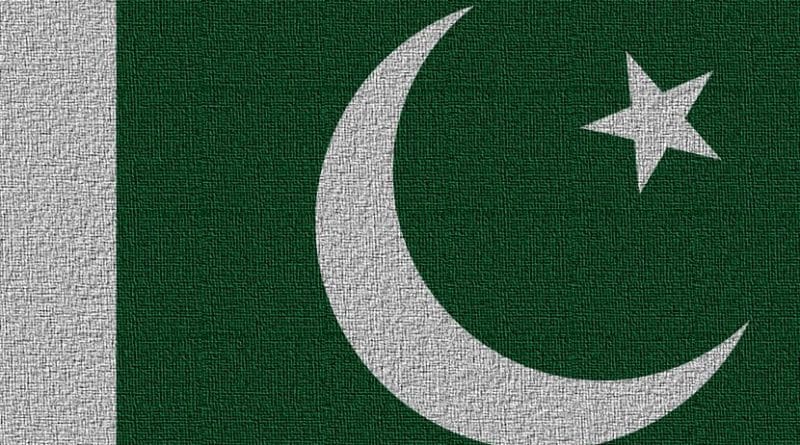Exchange Of Nuclear Installation Lists In South Asia: Step For Ensuring Safety Of Facilities? – OpEd
The only thing that two arch rivals India and Pakistan are adhered too or obeying in true spirits is the exchange of their nuclear installations under an agreement that prohibits them from attacking each other’s atomic facilities. It is titled as an ‘Agreement on the Prohibition of Attack against Nuclear Installations’ and was actually signed on December 31, 1988 and entered into force on January 27, 1991.
The agreement was signed by then Indian Prime Minister Rajiv Gandhi and his Pakistani counterpart Benazir Bhutto. It is a bilateral agreement signed between India and Pakistan that restrains them from carrying out any surprise attack and also impedes in assisting any foreign power attacking each other’s nuclear installations and facilities. It also binds the inform each other in case there is any change in the nuclear installation. For this reason both countries have to bring up to date each other about their nuclear installations and facilities.
Pakistan and New Delhi have done two such agreements, one is the Agreement on the Prohibition of Attack against Nuclear Installations and the other is the Agreement on Consular Access between India and Pakistan. This one was signed between the two countries on May 21, 2008. It facilitates the exchange of a comprehensive list of nationals including civil prisoners and fishermen of each country lodged in their respective jails as per provisions of the Agreement on Consular Access twice each year on January 1 and July 1.
Since the first such exchange took place on January 1, 1992, this year marks the 26th instance of the consecutive exchange of the nuclear installation list, a part of the treaty signed between the two countries. This exchange is always carried out using proper diplomatic channels in both New Delhi and Islamabad. Both the lists were delivered to the high commissions on either side.
While analyzing relations among both the countries it is evident to narrate that overall tension prevails in the geo-strategic environment of South Asia. Previously, Indian security forces committed mayhem in occupied Kashmir after the killing of freedom fighter Burhan Wani. After Wani’s killing, thousands of protesters in held Kashmir took to the streets and protested against the Indian government.
Thousands were injured by the Indian security forces’ use of pellet guns. On the other side the bilateral relations also suffered/ deteriorated when 19 Indian soldiers were killed in the Uri attack.
India blamed the incident on Pakistan, which Pakistan vehemently denied. Since the past couple of months, both countries have exchanged fire across the Line of Control and suffered casualties.
The term nuclear installation or facility according to the agreement’s language includes nuclear power and research reactors, fuel fabrication, uranium enrichment, isotopes separation and reprocessing facilities as well as any other installations with fresh or irradiated nuclear fuel and materials in any form and establishments storing significant quantities of radio-active materials.
Despite having so many skirmishes among each other, both states have kept up with years old tradition of exchanging installations lists by developing it as an exercise in faith. But, paradoxically narrating only the exchange of lists does not ensure safety of all the nuclear facilities. There is a need to comprehensively analyze this aspect too.
Keeping in mind the rivalry and nuclear competition of both south Asian armed states, the facilities that come under the exchange umbrella are not too open in front to either side. For instance, if the uranium enrichment is taken into account, India is reportedly enriching secretly, although that is off the record. The separation of isotopes and reprocessing facilities is also kept secret. India is engaged in the illegal export of thorium from Tamil Nadu and Europe as shown in the Indian media reports early last year, i.e., 2016.
Moreover, with regards to nuclear power and research reactors, India’s regulatory framework of safety of nuclear power plants was analyzed by IAEA in 2015 declaring that it needs to take further actions with regards to nuclear regulation as it is not independent enough to take internal emergency arrangements.
It is also clear that India has a poor nuclear materials safety record. According to the NTI (Nuclear Materials Security Index) India scores below Pakistan, and is ranked only above North Korea and Iran.
Thus, assessing all together, this depicts not only poor state of export controls in the country but further intricate associated concerns of nuclear proliferation and misuse, which are generally not picked by the Western media.
It would not be wrong to narrate that the exchanged list is merely a list that depicts what it wants to show to the world. Despite of the fact that the 1980’s CBMs were effective initiatives but ideally, there should be a mechanism to move ahead from those CBMs by working out for some new focusing more on the safety and transparency of nuclear installations and facilities on both sides.


Nuclear dangers grew on the subcontinent after India tested nuclear devices in 1998. India have to come close to nuclear reduction in its assets otherwise such exercises would be meaningless for the region keeping in mind their aspiring designs.
Exchange of nuclear installation lists i think is the only CBM which is constantly followed by both the nations. Pakistan and India the major historical rivals must seek for new protocols and agreements which can make them both realise the importance of friendly ties, which can further lead to a stable and peaceful regional environment.